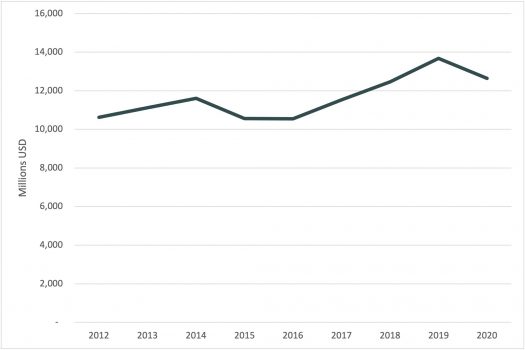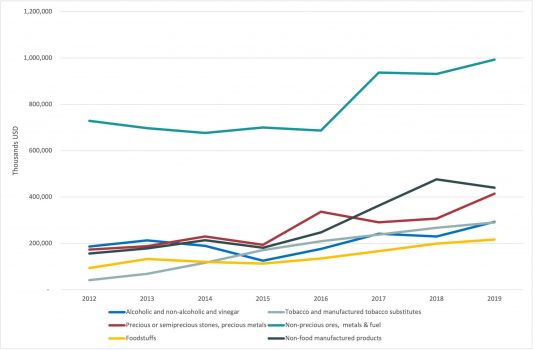Armenia
ECONOMY
Armenia has witnessed strong economic growth in the past decade with 7.6% GDP recorded in 2019. However due to Covid the economy contracted by 5.7% in 2020 with the landlocked country especially affected by severe border restrictions and closures by its neighbours to control the pandemic. The conflict with Azerbaijan over the disputed Nagorno Karabakh and surrounding areas in the second half of 2020 likely exacerbated the downturn. A strong rebound is likely in 2022 when vaccines should bring normal life back to the region.
CHART – GROSS DOMESTIC PRODUCT FOR ARMENIA

The economy of Armenia is especially reliant on the extractive industries with significant amounts of gold, iron ore, aluminum, and other metals. Manufacturing has begun to play a greater role with impressive growth recorded between 2015-18.
CHART – EXPORTS FROM ARMENIA BY MAIN PRODUCT LINES

The country has witnessed robust growth in exports from a number of sectors in its manufacturing base – albeit from a low starting point. The key highlight is the increasing amount of exports for garments both knitted and textile.
CHART –MANUFACTURING EXPORTS FROM ARMENIA BY MAIN PRODUCT LINES

Armenia exported over 200 million USD worth of garments in 2018 although there was a sharp fall in 2019 and 2020 figures may not be promising due to the negative effect of the pandemic. Generally manufacturing exports from Armenia tend to be for low value-added products and imports usually outstrip exports every year. Even though Armenia has a vibrant IT sector on account of its technology role in the Soviet Union, this has not translated into any discernable transfer of skills into its manufacturing sector.
One of the main drivers for economic development in Armenia is its membership of the Eurasian Economic Union beginning in 2015. This consists of a number of former Soviet republics but is dominated by Russia which is now Armenia’s largest trading partner, overtaking the European Union. Freedom of movement and a common external tariff means exports to Russia have surged since 2015. Switzerland has become a major player in Armenia’s export scene although this is primarily due to gold exports.
CHART – ARMENIAN EXPORTS TO ITS MAIN TRADING PARTNERS



